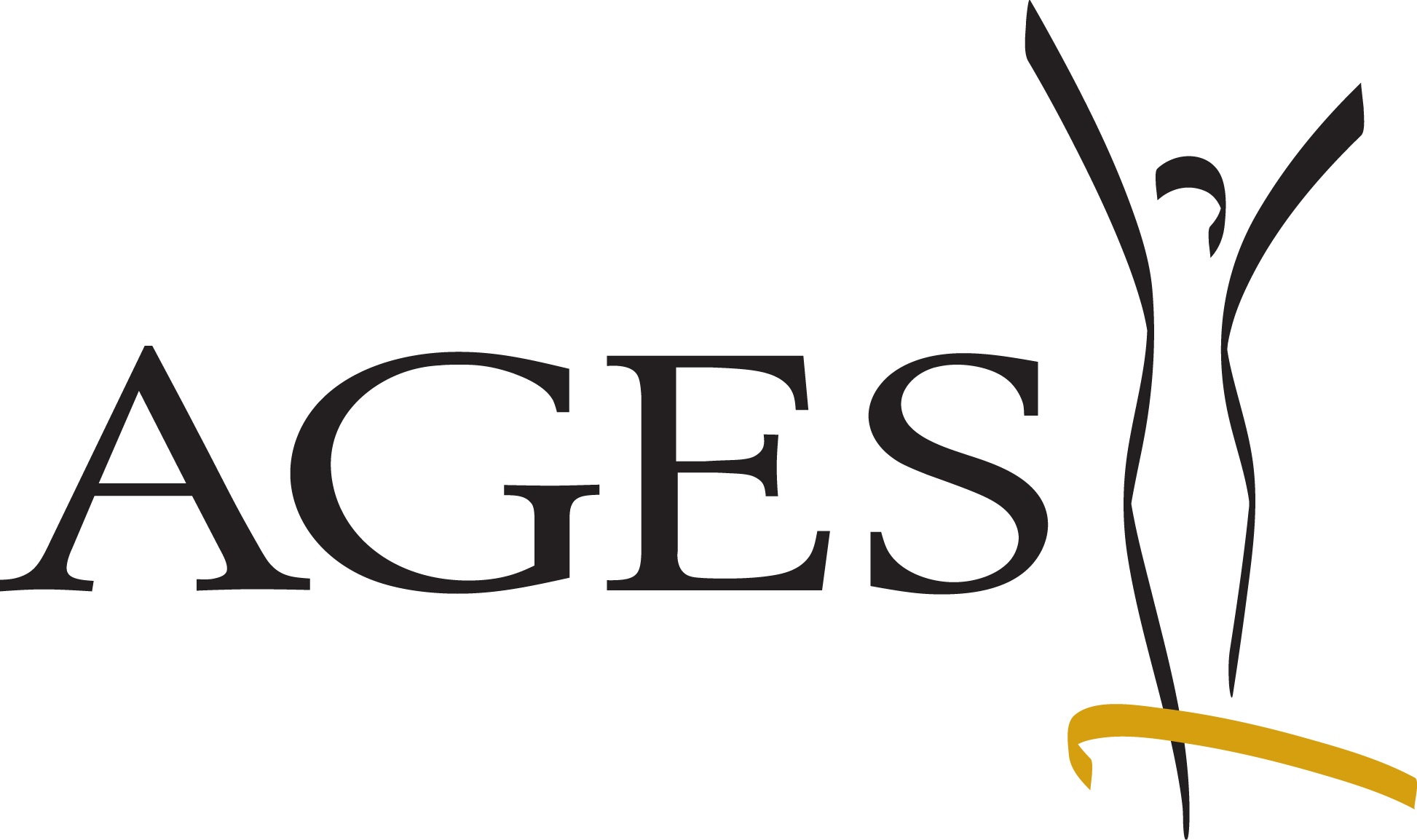Frog in a drop of water
State-of-the-art DNA technology and citizen science - "Frog in a drop of water" unleashes new prospects for amphibian research
Detective work for amphibian protection - for the first time, amphibian screening is being carried out throughout Austria by detecting their DNA traces in water - and everyone can take part. Amphibians - including frogs, toads, toads, salamanders and newts - are strictly protected in Austria. Nevertheless, populations are continuously and in some cases dramatically declining, which is mainly due to habitat loss.
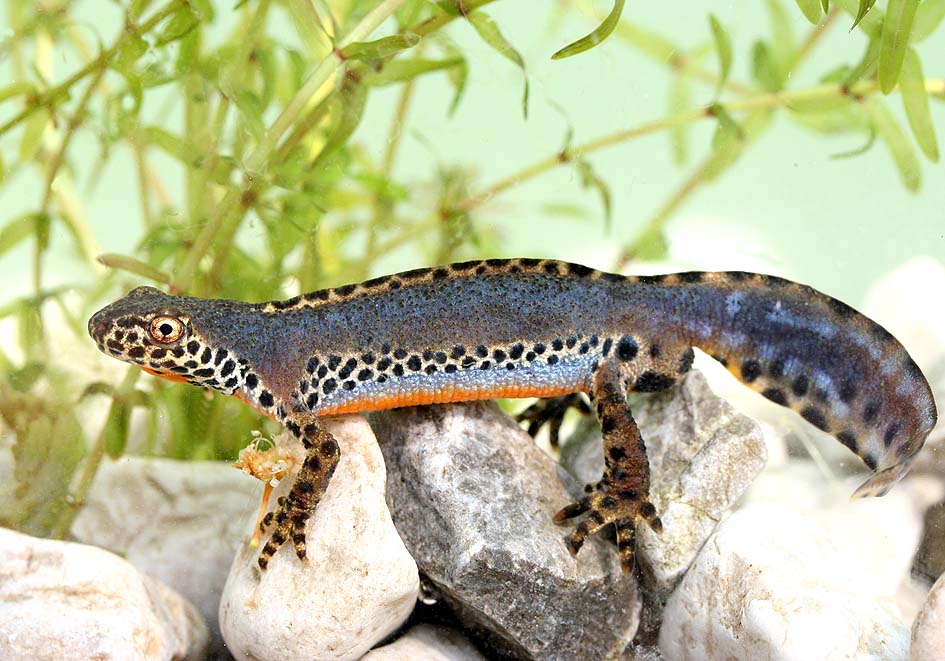
Natural, private garden ponds can play an important role. They act as important possible retreats, but are usually not accessible to the public. In addition, there are often small and amphibian-rich waters that are only known to those familiar with the area. This is where citizen scientists come into play: Their efforts make a valuable contribution to species records and data on the distribution of the amphibian fungus Batrachochytrium dendrobatidis, or Bd.
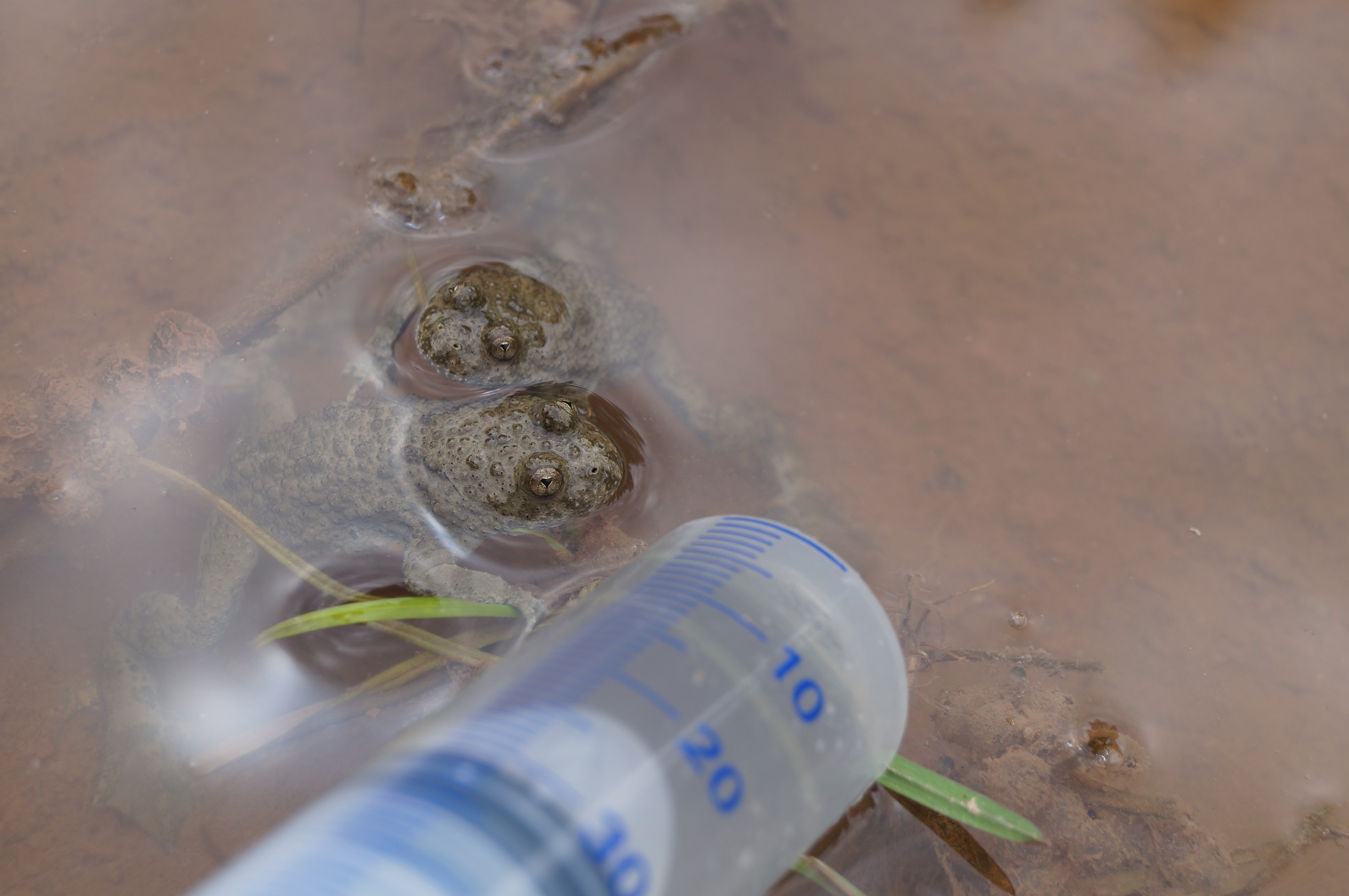
Interessierte aus ganz Österreich konnten sich bis Ende März bewerben, Ende April wurden 1.120 Beprobungskits versendet. Über eine kinderleichte Probennahme können die kostbaren DNA-Spuren, die von Lebewesen im Wasser hinterlassen werden, herausgefiltert werden. Durch eine einfache Wasserprobe kann also die Artenvielfalt im Teich, sowie das Vorkommen von Bd erfasst werden. Dazu wird der fertige Filter an die Uni gesandt, im High-Tech Labor analysiert und bioinformatisch ausgewertet. Die Ergebnisse werden im Herbst 2024 veröffentlicht.
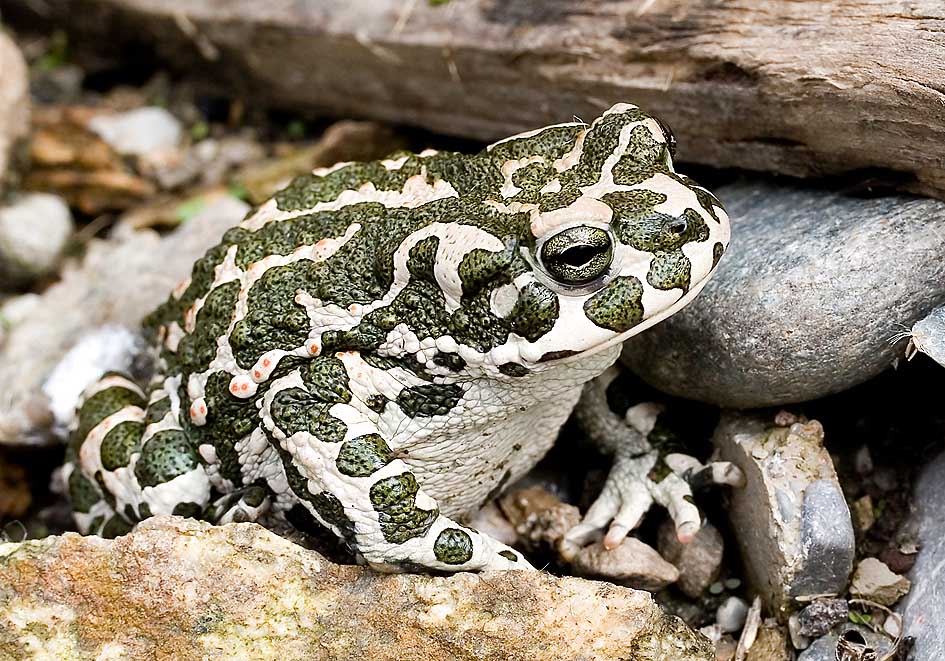
Videos zum Projekt

This project fulfils version 1.1 of the quality criteria for citizen science projects on Österreich forscht.
Restore4Life
What can we do to protect our wetlands and floodplains in Europe? What does the water management need to implement measure for the benefit of both the environment and the human society?
The Horizon Europe project Restore4Life aims at offering an online system that supports the restoration of wetlands in Europe. One important aspect is the development of easily applicable and meaningful methods to assess the state and functionality of wetlands before and after the restoration. This enables us to see whether the measures are sustainable for the future of the wetlands, for the climate and for us.
Why Citizen Science?
The integrity of wetlands can be assessed via a multitude of factors. Biodiversity indicates the health of the ecosystem, plant biomass shows how much carbon can be stored. In order to assess these data across Europe, we need methods which can be used also by non-experts. Together with Citizen Scientists, we want to develop, adapt, test, and optimize such methods so that we can offer them to other countries willing to implement restoration activities. We especially invite school classes to participate in our project.
The opportunities for joining the project are manifold: you can determine bird species via their songs, estimate the diameter and height of trees, evaluate orthophotos and satellite images, and many other things.
Where:
- March-Thaya-floodplains near Hohenau
- Salzach-Floodplains
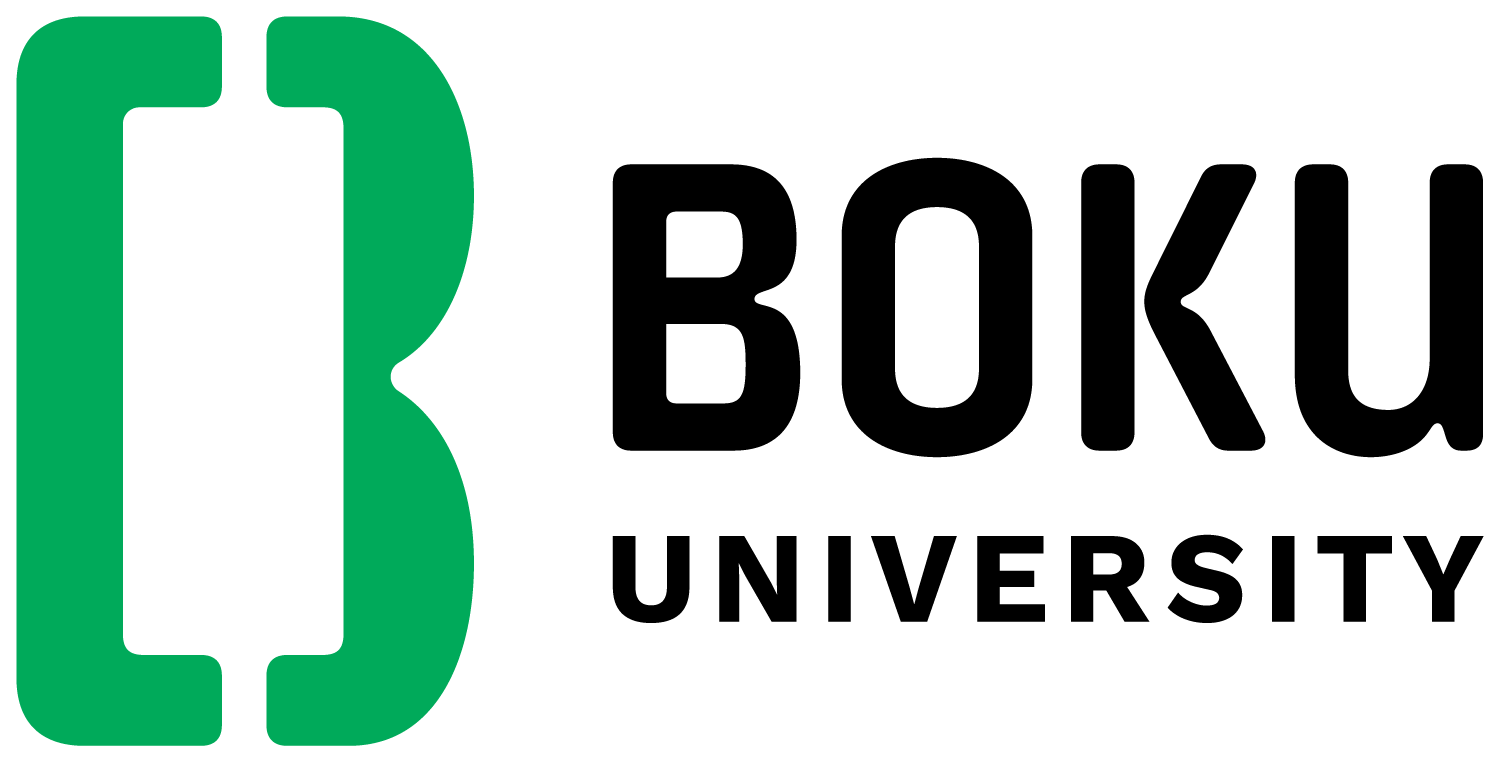
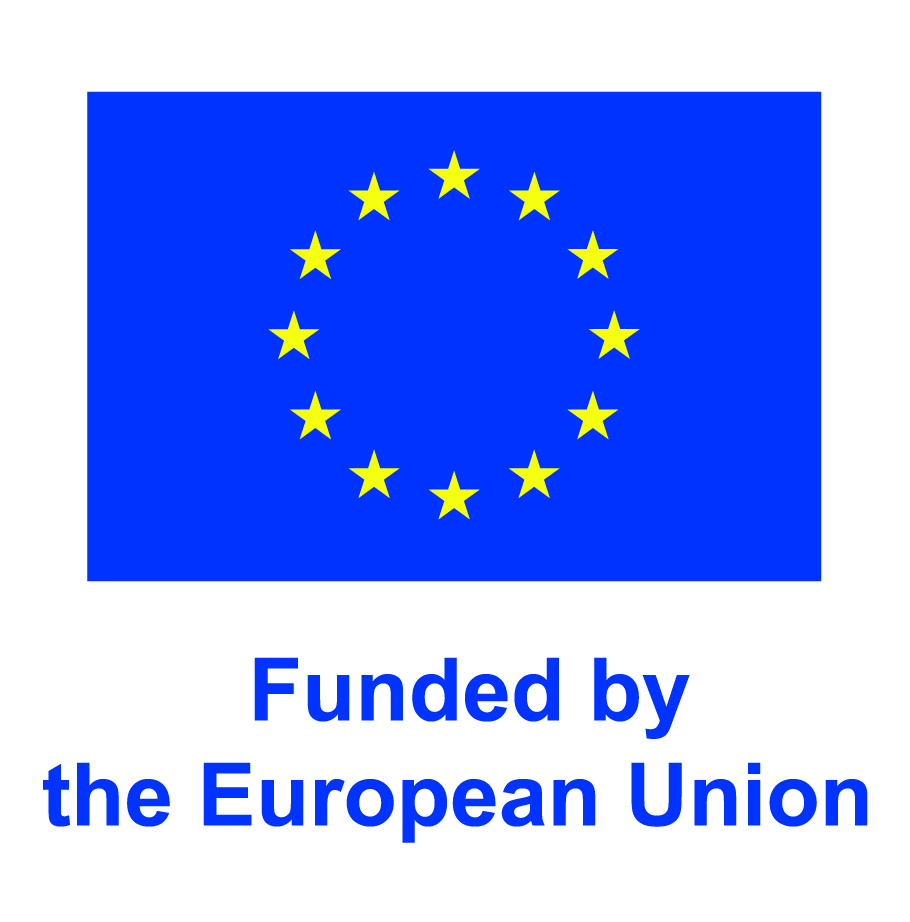
This project fulfils version 1.1 of the quality criteria for citizen science projects on Österreich forscht.
Mosquito Alert
Mosquito Alert is a citizen science project that allows tiger mosquitoes and other mosquitoes to be easily reported using a free app. Tiger mosquitoes are always smaller than a 1-cent coin, have a single white line on the back of the head and thoraxand white stripes on the body and legs. The submitted photos are examined by national and international experts and the finds are then displayed anonymously on a publicly accessible map.
Tiger mosquitoes are non-native mosquitoes that originally come from Asia. In recent decades, this species has spread widely in Europe. Tiger mosquitoes are not only a nuisance, they can transmit a variety of pathogens (e.g. the Zika virus or the dengue virus). If tiger mosquitoes spread in Austria, these diseases could also be transmitted in our country. In addition to tiger mosquitoes, other mosquito species can be reported with the app. These are the also non-native species Japanese bush mosquito, Korean bush mosquito and the yellow fever mosquito, which has not yet been detected in Austria. These species are also capable of transmitting certain pathogens and could displace native species. Furthermore, finds of the native common house mosquito can be reported. This is the most important of the native species in the spread of pathogens (e.g. West Nile virus).
Background
The recording of the spread of mosquito species in a country is usually carried out by labor-intensive and costly monitoring projects carried out by experts. Since comprehensive expert monitoring is difficult (and not affordable), reports from citizens often represent a valuable addition to such monitoring projects. For example, the first findings of the Asian tiger mosquitoes in Vienna were reports made by citizens. To offer citizens a tool to report possible tiger mosquitoes and other non-native mosquito species as uncomplicated as possible, the app “Mosquito Alert” was developed. This project, originally from Spain, has been running since 2014 and is coordinated by the institutions CREAF (Centre de Recerca Ecològica i Aplicacions Forestals), UPF (Universitat Pompeu Fabra) ICREA (Institución Catalana de Investigación y Estudios Avanzados) and CEAB-CSIC (Centro de Estudios Avanzados de Blanes). In Spain, more than 18,300 mosquitoes have been reported with the app so far. As part of the AIM-COST5 (AIM = Aedes Invasive Mosquitoes, COST = European Cooperation in Science and Technology) and Versatile Emerging infectious disease Observatory (VEO) projects, the app, via which the mosquitoes are reported, was adapted to the European situation in 2020 by expanding the range of species and the app is now available in 18 different languages. The project is coordinated by AGES for Austria and is carried out in cooperation with other national experts from Vetmeduni Vienna (Priv.Doz. Dr. Hans-Peter Führer, Dr. Maria Unterköfler) and the University of Vienna (Carina Zittra, PhD). If a participant sees one of the target species (instructions for recognition and differentiation are included in the app), one or more photos of this finding can be uploaded using the app. It is important to ensure that the pattern on the thorax and the hind legs is clearly visible, as these are decisive for species identification. The uploaded photos are then examined by three (of approx. 50) experts, at least one of whom is a national expert. They then decide whether it is one of the target species, and if so, which one. Due to the visibility of the identification features in the photo, a find is either “definately” or “probably” assigned to a certain species. The reported findings are displayed anonymously on a publicly accessible map together with the photo. This map could then support health authorities or mosquito control programs in finding out where intervention is necessary. The collected data set is also freely accessible and provides scientists with important information about the distribution of the recorded species. In addition, publicly accessible breeding grounds can be reported via the Mosquito Alert app, which are then also displayed on the map. This can support the implementation of control measures, as it shows where there is still a need for action. Furthermore, mosquito bites can also be reported. This information is not currently displayed on the map but could also indicate in the future where the nuisance for citizens is particularly high and therefore measures may be necessary.
Overview of mosquito species
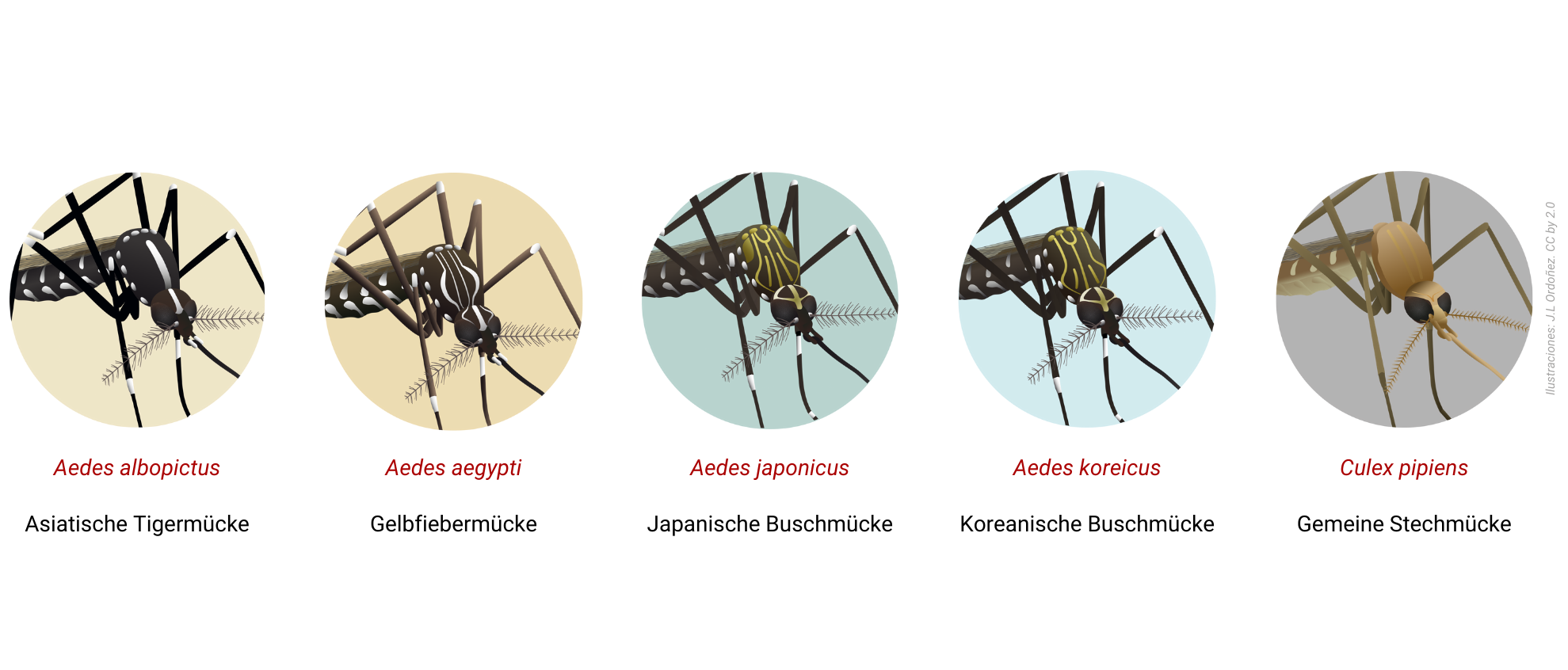
Citizen Science Seminar
In spring 2024, poject coordinator Karin Bakran-Lebl held a lecture about mosquito alert as part of the lecture series "Citizen Science Seminar" at BOKU University: "Mosquito Alert: In search of the tiger mosquito with Citizen Scientists" (in German).
Podcast episode
In July 2024, project coordinator Karin Barkan-Lebl was a guest on the Österreich forscht podcast Wissen macht Leute - you can listen to the episode here (in German).
More information (in German)
This project fulfils version 1.1 of the quality criteria for citizen science projects on Österreich forscht.
AmphiBiom
The AmphiBiom project is focused on the study of the European green toad in Austria. With the support of Citizen Scientists, we investigate the distribution of this endangered amphibian species, which, as a typical pioneer species, can quickly colonize newly emerging water bodies.
Therefore, the European green toad is an ideal species for projects to investigate the distribution status through call monitoring and the installation of small water bodies with the support of the Citizen Science Community. With AmphiBiom we want to show that everyone can support the survival of this protected species with just a little effort. Already through these small but valuable measures, the general awareness that is needed to better understand species and habitat protection measures, is strengthened.
Project background
Amphibians are among the most threatened animal taxa in Austria and worldwide. The reasons for this include habitat destruction and degradation, fungal diseases, and changes in land use. For some amphibian species, despite many disturbances, agricultural areas or even cities also represent important habitats. The natural spawning grounds of the European green toad, are steppe lakes filled after rainfall or ponds formed after flooding with strong sunlight. With a few exceptions, the natural spawning habitats of the European green toad have largely disappeared in Europe. In addition to these near-natural water bodies, artificial water bodies or puddles filled after rain showers are often accepted by European green toads today.
The importance of alternative habitats
The disappearance of fallow land and closure of gaps between buildings, leads to a deterioration of the conservation status of the green toad in rural areas as well as in inner-city areas. Countermeasures, such as the provision of replacement habitats, can prevent this negative development. The initiative for the creation of small water bodies, which is scientifically accompanied in the AmphiBiom project, not only forms an additional spawning offer for green toads and other threatened amphibians (e.g., Yellow-bellied toad). It gives us the opportunity to study the succession and progressive colonization of water bodies by diverse pioneer fauna.
The contribution of AmphiBiom to the conservation of the green toad
This project uses Citizen Science to study this pioneer species in order to investigate its distribution in areas that are often inaccessible for research (e.g., private gardens) and to actively involve citizens in the project.
In addition to creating new habitats for the green toad and other amphibians, we are also using the power of citizen science to launch an Austria-wide, app-based amphibian call monitoring programme. With its high-pitched warbling, the green toad is certainly one of the most beautiful calling amphibians in Austria, but it is not the only one with a characteristic song. For example, tree frogs and toads can also be clearly identified by their song. As part of the AmphiBiom project, we invite interested people to use our mobile phone app "AmphiApp" to record amphibian calls in their neighbourhood and thus contribute to the knowledge about the distribution of these protected animals.
In a further step, the complementary evaluation of already existing protection measures will clarify in which areas such measures (still) make sense, or where they could contribute to the resurgence of populations classified as extinct.
Podcast episode
If you would like to learn more, you can listen to the Wissen macht Leute podcast episode about the project (in German). More information can be found here.
Citizen Science Seminar
In autumn 2024, poject coordinator Lukas Landler held a lecture about AmphiBiom as part of the lecture series "Citizen Science Seminar" at BOKU University: The citizen science project "AmphiBiom - habitat for green toads and co" (in German).

Dieses Projekt wird durch den Biodiversitätsfonds des Bundesministeriums für Klimaschutz, Umwelt, Energie, Mobilität, Innovation und Technologie gefördert.
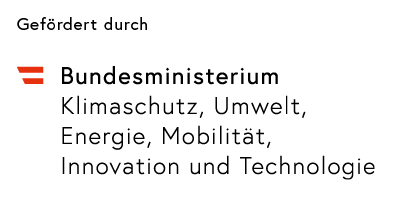

This project fulfils version 1.1 of the quality criteria for citizen science projects on Österreich forscht.
Garden dormouse
Wanted - Garden dormouse in Vorarlberg
The garden dormouse, which is active at dusk and at night, has probably the most contrasting coat colouration among the small mammals in our latitudes. It prefers coniferous and mixed forests with rocky ground as its habitat. Little is known about its occurrence in Vorarlberg.
In a citizen science research project, the inatura - Erlebnis Naturschau Dornbirn was therefore searching for the garden dormouse in Vorarlberg in cooperation with the apodemus institute.
The "Garden dormouse" project has been completed. If you have spotted a garden dormouse, your observations are still welcome and you can report them on the laendlemaus.at platform.
This project fulfilled version 1.1 of the quality criteria for citizen science projects on Österreich forscht.
Bumblebee Monitoring Austria
Citizen science-based bumblebee monitoring is a pillar of the Austrian wild bee survey. Most wild bee species can only be distinguished under a microscope. The genus of bumblebees (Bombus) is an exception and can usually be distinguished at species level after a training phase in the field (see Gokcezade et al., 2010), so that not only professionals can help with the observation and recording of bumblebees. Bumblebee monitoring ties in with the already existing reporting platform "naturbeobachtung.at" of the Austrian Society for Nature Conservation.
Through numerous initiatives such as bumblebee identification courses and excursion offers, a citizen science community with very good expertise has been formed in recent years. Since 2014, more than 61,000 observations of all bumblebee species currently occurring in Austria have been reported by over 700 reporters via web and app. In 2021 alone, 12,600 bumblebee observations were received. More than 51,000 reports could be checked, corrected if necessary and confirmed by professionals. Within the framework of the project, the reporting platform is to be expanded to include the option of transect counting (previously non-standardised individual observations) and interested participants are to be motivated, trained and supported.
The aim is to develop a functioning citizen science network in the next two years, which will be used in the long term. We aim to cooperate with other European countries that have established similar projects in order to address the ongoing biodiversity crisis on an international level. In the future, trends for individual populations are to be derived from the data and conservation measures improved.
This project fulfils version 1.1 of the quality criteria for citizen science projects on Österreich forscht.
ServeToPe
Better governance of ecosystem services at local scales in the Wienerwald region
A joint research project of the University of Natural Resources and Life Sciences, Vienna (BOKU) and the University of Vienna.
What is ServeToPe studying and what are its goals?
Society uses a variety of services that natural ecosystems provide, such as clean water, an attractive landscape for recreational purposes, food, or renewable energy sources. Many of these so-called ecosystem services (ESS) are influenced by humans. These include, for example, agricultural activities or the construction of roads. As a consequence, society regulates human actions and thus indirectly the availability of ESS. Examples of such policies are agri-environmental programs or local land use planning.
The Citizen Science project ServeToPe develops methods to better quantify the demand for ESS and their availability in a landscape. ServeToPe thus aims to contribute to more sustainable management of ESS and more targeted policies that focus on people's needs. ServeToPe is thereby based in the biosphere reserve Wienerwald as a case study region.
ServeToPe mainly aims to answer the following research questions.
- What is the current demand for ESS and to what extent can the Wienerwald region satisfy this demand with the offered ESS?
- What does "good management" mean from the citizens' point of view? How can policies contribute to a convergence of demand for ESS and their supply?
ServeToPe will reveal mismatches between the demand for ESS and their supply and will propose countermeasures. An example of this could be regional conservation efforts specifically planned for the landscape.
What methods are used?
ServeToPe uses a variety of methods to answer the research questions and to involve as many and as diverse citizens as possible. For example, workshops were held in schools or with citizens from the region. All citizens can participate online via a survey (see below). On the project website you can find more information about the methods and the roles of citizens (in German).
How can I participate?
Citizens are important research partners in ServeToPe. In particular, they support the visualization and quantification of the demand for ESS and of conflicting goals and trade-offs of between different ESS. A trade-off exists, for example, when several citizens want to use the same area for different purposes resulting in conflicts (e.g. recreational use and food production). You as citizen can therefore make an important contribution to the research project by participating in the following anonymous surveys.
In the main survey you can (1) enter your own activities and uses of ESS in the Wienerwald, (2) enter and locate frequently observed activities and ESS uses, and (3) identify trade-offs and opportunities for improvement. You can also upload pictures for this purpose. The main survey can be filled in only once.
However, you can also participate more regularly and thereby support ServeToPe even more intensively. This is possible via a second short survey, where you can enter and locate observed activities and ESS uses, as well as trade-offs. A picture upload is also possible here. In this short second survey, you can participate repeatedly over the entire duration of the project - i.e. continuously enter your observations. This gives us an even more accurate representation of uses and activities. You as a citizen scientist gain the opportunity to locate multiple uses and activities in areas and therefore identify multiple and more accurate trade-offs and improvements.
What happens to these results?
The results from the surveys of activities, uses, and trade-offs in the Wienerwald are compiled by the BOKU Vienna and University of Vienna research team and compared with other data on the supply of ESS (see methodology). These results are then published on the ServeToPe website. You can also sign up in our contact form to receive the results via email.
Afterwards, the results are presented to stakeholders from the region (e.g.: Employees of the administration, representatives from agriculture, nature conservation, recreational use, education and regional management) in a workshop. In this workshop, solutions and countermeasures will be developed based on the identified trade-offs and conflicts due to differences in ESS supply and demand.
If you have any questions, please contact Katrin Karner (This email address is being protected from spambots. You need JavaScript enabled to view it.) without hesitation.
The project team
ServeToPe is led by Martin Schönhart (This email address is being protected from spambots. You need JavaScript enabled to view it.) and Katrin Karner (This email address is being protected from spambots. You need JavaScript enabled to view it.), from the Institute for Sustainable Economic Development at BOKU University. Furthermore, the project team includes Thomas Wrbka (This email address is being protected from spambots. You need JavaScript enabled to view it.) and Florian Danzinger (This email address is being protected from spambots. You need JavaScript enabled to view it.) from the Department of Botany and Biodiversity Research at the University of Vienna. In addition, the students of the course " Conservation Related Methodologies of Social, Cultural and Economic Sciences" of the University of Vienna are involved in the project. If you have any questions, please contact Katrin Karner (This email address is being protected from spambots. You need JavaScript enabled to view it.) without hesitation.
This project fulfils version 1.1 of the quality criteria for citizen science projects on Österreich forscht.
Friends of the Garden
From alpine crested newt to sand lizard - gardening enthusiasts report please
Private gardens not only provide a place of peace and relaxation for humans but can also serve as important habitats and stepping stones for many animal and plant species. Especially the two endangered species groups of amphibians and reptiles can benefit from a garden designed with nature in mind. However, occurrences of common tree frogs, smooth newts, common lizards, and other species in residential areas are comparatively poorly documented. Reports from garden owners can fill knowledge gaps and contribute to the exploration of the herpetofauna. For this reason, the Austrian Society for Herpetology (ÖGH) annually invites people throughout Austria to participate in the campaign “Von Alpenkammmolch bis Zauneidechse – Gartenfreunde bitte melden“. Observations from one's own garden, school or community gardens are welcome. This year, the campaign will take place from May 8th to 14th, 2023. Observations can be submitted via the platforms naturbeobachtung.at, inaturalist.at, or herpetofauna.at. Incoming reports will be verified by experts, and the reporters will be contacted in case of misidentification. The collected data will then be transmitted to the herpetofaunistic database of the Herpetological Collection of the Natural History Museum in Vienna (HFDÖ) and thus will be available for research and nature conservation in the future.
What happened so far
In the past two years, over 200 occurrences of amphibians and reptiles were reported, with over 1000 individuals from 22 species. On average, two observations per garden were submitted. Although all states were represented, most of the reports came from Lower Austria. The most common reptile species were slow worm, common lizard, and grass snake, while the smooth newt was the most frequently observed amphibian species, followed by the common toad and the group of water frogs. A brief summary of the previous years can be found in the ÖGH-Aktuell issues 59 and 62.
This project fulfils version 1.1 of the quality criteria for citizen science projects on Österreich forscht.
ABOL-BioBlitzes
The lack of sustainability in human activity is leading to the global destabilisation of our natural systems. The resulting biodiversity and climate crises require a transformation to an environmentally sustainable society. However, the expertise in the field of taxonomy required for this transformation is often only shared by a few experts. This leads to a bottleneck in biological species knowledge, where, depending on the group of organisms, often only a few citizen scientists have the expertise to identify species. The ABOL-BioBlitzes have set themselves the goal of making these rare competences available to society.
Correct species identification of organisms is the basis for recording biodiversity and its changes. Traditional identification using morphological characteristics is very time-consuming and requires many years of experience and expertise; as a result, very many species can only be reliably identified by a small number of people. DNA barcoding is an innovative, resource-efficient form of species identification. DNA barcodes are standardised, species-specific DNA sequences from clearly identified individuals and thus serve as comparative references for DNA-based identification. The ABOL BioBlitzes help to populate the "digital identification book" (reference database) on the basis of DNA barcodes. This makes it possible to identify species even from tissue residues, larvae or environmental and mixed samples, such as a water sample from a pond. DNA barcoding helps to better fulfil the increased monitoring requirements (e.g. insect mortality, climate change). Scientists around the world are working on filling the reference database. The ABOL initiative (Austrian Barcode of Life) coordinates the creation of DNA barcode references for animals, plants and fungi that occur in Austria and ensures that this data is made available to the general public. ABOL works together with many national research institutions and private experts and is also networked with European and international initiatives.
With the ABOL-BioBlitzes everyone has the opportunity to help building up this reference database! The ABOL BioBlitzes are (usually) linked to annual "Biodiversity Days", which are organised by national parks, biosphere reserves or associations and take place in various regions of Austria. Biodiversity experts and scientists meet at these events to record biodiversity in a defined area within 24 hours. As part of the ABOL BioBlitz, species are not only documented, but also genetically analysed, i.e. DNA barcodes are created. Tissue samples of organisms that have been collected and identified by experts are handed over to the ABOL team, which initiates the creation of the DNA barcode. The corresponding data is then published in the international open database "Barcode of Life Data System" (BOLD).
The ABOL BioBlitz not only fills the reference database as a basis for future monitoring, but also secures the knowledge acquired by private and institutional experts in the long term. The results of the ABOL BioBlitz are published in a scientific journal approximately every two years, with all participants being able to contribute.
What happened so far
The first ABOL BioBlitz took place in 2019 at the GEO-Tag der Natur in the Biosphere Reserve Nockberge. Since then, 4-6 ABOL-BioBlitzes followed each year throughout Austria. A summary of the results was published in the journal Acta ZooBot with the collaboration of many ABOL BioBlitz participants. Forty experts collected 2,172 individuals or 1,040 species. DNA barcodes of most individuals could be generated and are available to national and international researchers and nature conservation experts in the barcoding reference database BOLD. The results of all previous ABOL BioBlitzes are summarized on the ABOL homepage, where reviews of each ABOL BioBlitz can also be found on the ABOL blog.
If you don't want to miss future ABOL BioBlitzes, you can also subscribe to the ABOL newsletter!
This project fulfils version 1.1 of the quality criteria for citizen science projects on Österreich forscht.
COwLEARNING
Breaking the blame game:
COwLEARNING for sustainable beef and dairy supply
Our society faces grand challenges, such as mitigating climate change and adapting to its consequences, ensuring a healthy diet and maintaining cultural landscapes with high biodiversity. A sustainable agri-food industry addresses these challenges.
In Austria, with its high share of meadows and pastures, cattle husbandry is particularly important. Several aspects of dairy and beef supply are perceived as unsustainable. This is for instance its impact on climate change because during their digestion cattle release the climate-damaging greenhouse gas methane. Moreover, both animals and humans often face welfare problems because of difficult living and working conditions on farms and abattoirs. Many animals are kept in small spaces for the production of cheap products in a competitive market. Cattle are then prone to illness and their treatment with antibiotics may result in antibiotic resistance. In addition, our high consumption of meat causes health risks.
These and other problems in our beef and dairy supply are broadly discussed but many questions remain unanswered:
- What has driven past changes in dairy and beef supply and why have sustainability innovations (not) been implemented?
- How do alternative dairy/beef chains compare in terms of animal and human welfare, the environment, socio-economic characteristics, and potential for growth?
- What are broadly acceptable and feasible changes for the future?
The project COwLEARNING combines scientific knowledge from the universities with the knowledge of practitioners in farming, processing, retail, gastronomy and consumption*. Together, we search for possible ways of change and thereby consider different innovative practices. This may include, for instance, pasture-based feeding, cow-calf contact systems (the calf stays with the cow for longer time after birth), mobile abattoirs, cow-sharing (animals are slaughtered only when all their parts are sold), milk and beef substitutes.
With a farm-to-fork assessment, we compare these innovations from the farmer to the consumer. Together with practitioners, we develop scenarios, this means pictures of the future showing alternative developments. In addition, we develop serious games to convey the topic in a playful way. With these approaches we want to stimulate learning and provide spaces to experiment with more sustainable beef and dairy supply.
*Participation is limited to these stakeholder groups and therefore closed.
Citizen Science Seminar
In January 2024, poject coordinator Marianne Penker held a lecture about the project (in German) as part of the lecture series "Citizen Science Seminar" at BOKU University.
Picture gallery
-
 Common Vision © Jana Wiese Common Vision © Jana Wiese
Common Vision © Jana Wiese Common Vision © Jana Wiese -
 Projectstart © FWF-LuizaPuiu Projectstart © FWF-LuizaPuiu
Projectstart © FWF-LuizaPuiu Projectstart © FWF-LuizaPuiu -
 Transdisciplinary Team © COwLEARNING Transdisciplinary Team © COwLEARNING
Transdisciplinary Team © COwLEARNING Transdisciplinary Team © COwLEARNING
https://www.citizen-science.at/en/projects/tag/animals?start=10#sigProIda65ba1cecd
This project fulfils version 1.1 of the quality criteria for citizen science projects on Österreich forscht.


